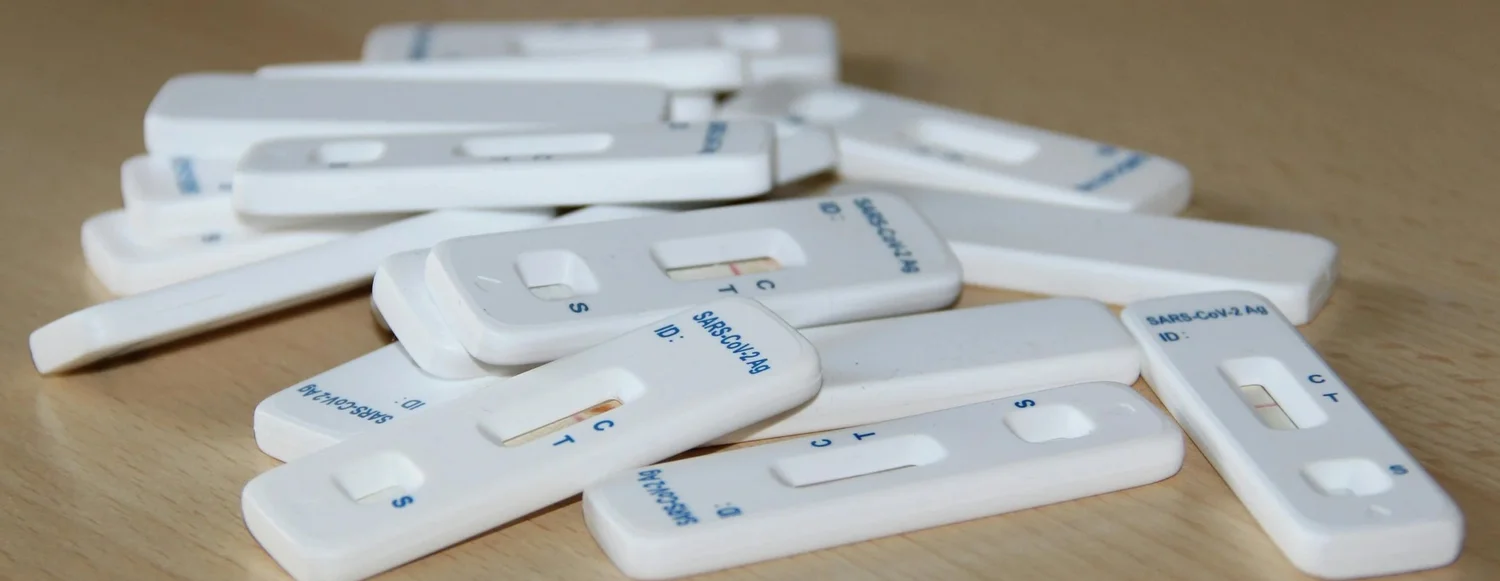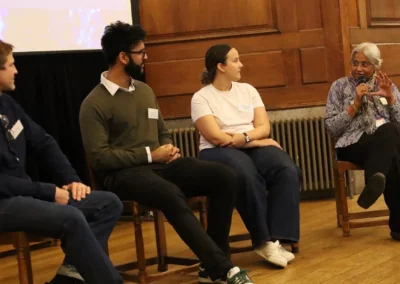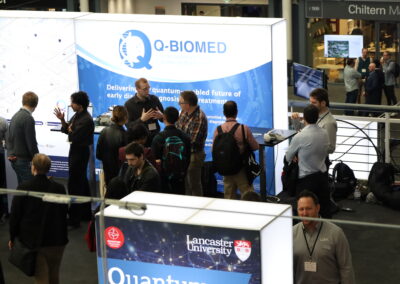In research published in Nature Communications earlier this month, some of our scientists have demonstrated that their spin-enhanced nanodiamond rapid test can detect COVID-19 earlier and more accurately than conventional lateral flow tests.
Quantum diagnostics
Traditional rapid antigen tests (commonly known as lateral flow tests) often use gold nanoparticles, other light-absorbing nanoparticles such as selenium, or polymer beads to indicate the presence of viral proteins. However, their sensitivity is limited by nanoparticle signal and background interference, especially when viral loads are lower, and they often miss early-stage infections.
Developed by a team at University College London, the new test harnesses the unique quantum properties of nitrogen-vacancy (NV) centres in fluorescent nanodiamonds. These atomic-scale defects allow the diamond to act as a quantum sensor, where the spin state can be manipulated and read out optically. By driving transitions between spin states and modulating fluorescence, the system can ‘lock in’ signals from the nanodiamond probes while suppressing background noise — a technique known as spin‑enhanced detection.
High accuracy and earlier detection
When compared to a matched gold nanoparticle lateral flow assay using the same reagents, the nanodiamond test demonstrated an approximately 1,000 fold improvement in analytic sensitivity, meaning it can detect much lower concentrations of viral antigen.
In this clinical study of 103 patient swab samples, the quantum-enhanced test achieved 95.1% sensitivity at high viral loads and 86.8% sensitivity across all viral loads, and 100% specificity compared to the gold-standard PCR tests.
Combining these results with viral load data from other trials, the scientists project that the test could detect infections an average of two days earlier than conventional lateral flow tests and identify 2.2 times more cases on the first day of symptoms — a critical window for reducing transmission.
Looking forward
Researchers are now focusing on making this test suitable for bedside use by developing a portable fluorescent reader. This could make the technology especially impactful in resource-limited settings, such as GP surgeries and pharmacies.
Beyond COVID-19, the platform could be adapted for use with other diseases, both communicable and non-communicable, offering a new and powerful tool for early, accurate detection.
Launched in December 2024, the Quantum Biomedical Sensing (Q-BIOMED) Research Hub — the UK’s first hub for biomedicine — aims to deliver a step change in earlier disease diagnosis and treatment through developing a new generation of quantum sensors.
Developing new ultra-sensitive quantum-powered tests and sensors could enable much earlier diagnosis of disease such as cancer allowing for more rapid medical interventions and potentially saving lives. Ultimately, this could translate to better patient outcomes and help to reduce waiting lists, easing pressures on the NHS.
Q-BIOMED is part of a £160M network of five Quantum Technology Research Hubs, set up as part of the UK National Quantum Technology Programme, to ensure the UK benefits from the potential of quantum technologies.



